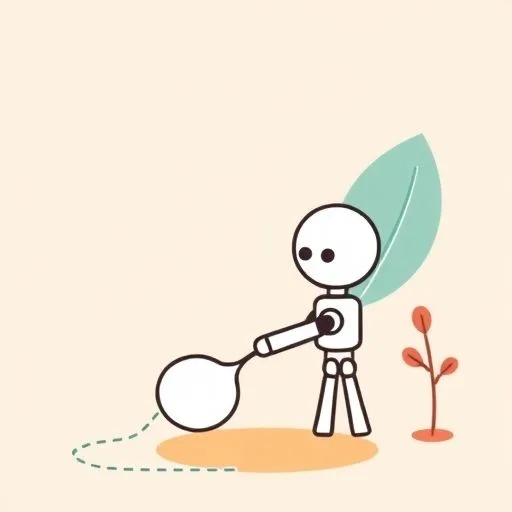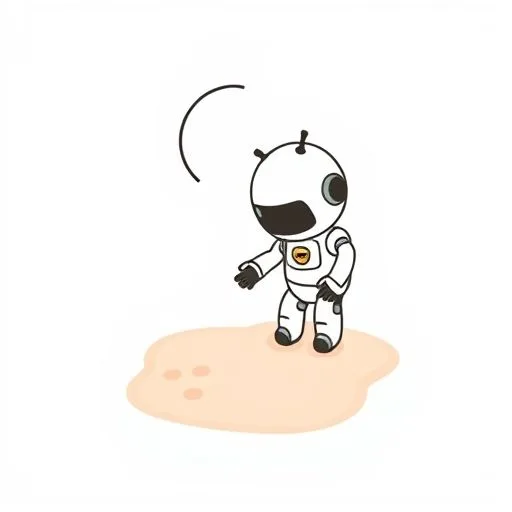
Ever notice how kids ask ‘why’ more when robots move slowly? It’s like their curiosity wakes up in those gaps. One minute, the helper bot’s taking forever to stack plates, and the next, your little one’s firing off questions faster than it can shuffle across the kitchen. Who hasn’t seen that? That tiny machine’s awkward pause suddenly becomes a doorway—not just for giggles when it drops a cup, but for something deeper. The way moms lean in when those questions come, eyes softening like they’re watching magic unfold… yeah, that moment. It feels warm, doesn’t it? Like the whole room breathes together.
When slow tech makes curiosity bloom

Picture this: the robot’s arm moves like it’s savoring every second as it picks up a spoon. Smooth tech demos never show this—real life’s messy, right? But watch your kid’s face. They don’t care about speed. Suddenly, they’re tracking the motion like it’s a puzzle: ‘Why does it only go left and right?’ Or ‘Is it tired?’ In those quiet gaps between steps, their wonder spills out.
You see it in how they dart ahead to guide it, hands fluttering with excitement. We’ve all felt that tug in our chest. Like when the bot hesitates turning, and your child leans close, whispering encouragement.
The mom beside you? Her smile isn’t about the chores getting done—it’s pure recognition. She sees how those pauses let kids study movement, build questions, feel safe enough to explore. That imperfect tech? It’s actually a gift: time to witness how kids transform stiffness into friendship.
That gentle sigh she lets out when laughter fills the kitchen? It’s the sound of stress melting. Because perfection would’ve stolen this.
Remember that? When slowness stopped being annoying and started feeling like a shared secret. Like maybe—just maybe—the robot’s flaws are what let us truly see our kids’ minds at work. Best moments aren’t scheduled; they bloom in the unplanned spaces.
The hidden lessons in a clumsy machine

Here’s the thing we rarely talk about: when the robot fumbles, kids rarely get mad. They get curious. Ever seen a child offer a napkin after the bot spills juice? ‘It tried its best,’ they whisper. Moms catch this instinctively—they don’t scold the machine or rush to fix it.
Instead, they kneel beside small hands, asking, ‘What do you think went wrong?’ That’s when magic happens. Kids trace the bot’s path with sticky fingers, inventing fixes using toys or tape. It’s not about the cup breaking; it’s about watching resilience take root.
I’ve watched moms turn stumbles into something beautiful. When the bot loops uselessly near the couch, they might point outside: ‘Look how the wind moves trees slower but still gets everything done.’ And you see it—their voice softening, making patience feel like an adventure.
And that’s where the real magic happens: teaching kids that mistakes aren’t failures, but invitations.
Those messy moments reveal so much. When slowness could frustrate, moms choose presence. They trade efficiency for connection—letting a dropped plate become a lesson in gentle correction. And in watching them… we realize slow tech isn’t broken. It’s training wheels for empathy.
Kids learn robots don’t ‘feel,’ but they practice care anyway. That’s the quiet strength we admire: turning glitches into grace.
Guarding the ‘why’ alongside your child

Truth is, robots force a choice. We can fix their speed or savor their slowness. The moms I’ve learned from? They choose the pause. Because rushing steals something precious—the raw honesty in a child’s ‘why?’ When the bot drags its feet resetting the table, they sit closer.
They don’t say ‘Just wait!’ They ask, ‘What questions are you wondering?’ Suddenly, ‘why’ isn’t noise; it’s a bridge.
That night my nephew asked if robots dream, his aunt didn’t google an answer. She pulled him to the window, staring at stars together. ‘Maybe it dreams of smoother moves,’ she murmured, ‘but look what we have right now.’ No grand speech—just breaths syncing under the moonlight.
In moments like this, tech’s imperfection becomes the canvas for presence. Moms know: today’s success isn’t a clean kitchen. It’s hearing your child whisper, ‘Let’s help it do better.’ That’s the heartbeat we protect.
So here’s what I’ve carried with me: those slow robot walks teach us to walk slower too. Children don’t need flawless helpers—they need us to notice when they lean in, eyes wide. Protecting that curiosity means guarding the space between steps where wonder breathes.
When you catch yourself annoyed by a bot’s pace, pause instead. Watch your child watch the machine. Feel how their questions pull you into their world. Then thank whatever made you slow down—because in that stillness, hearts connect deepest. Imperfection might just be love’s favorite classroom.
Source: Meet R1, a Chinese tech giant’s rival to Tesla’s Optimus robot, The Verge, 2025/09/11 12:10:25
